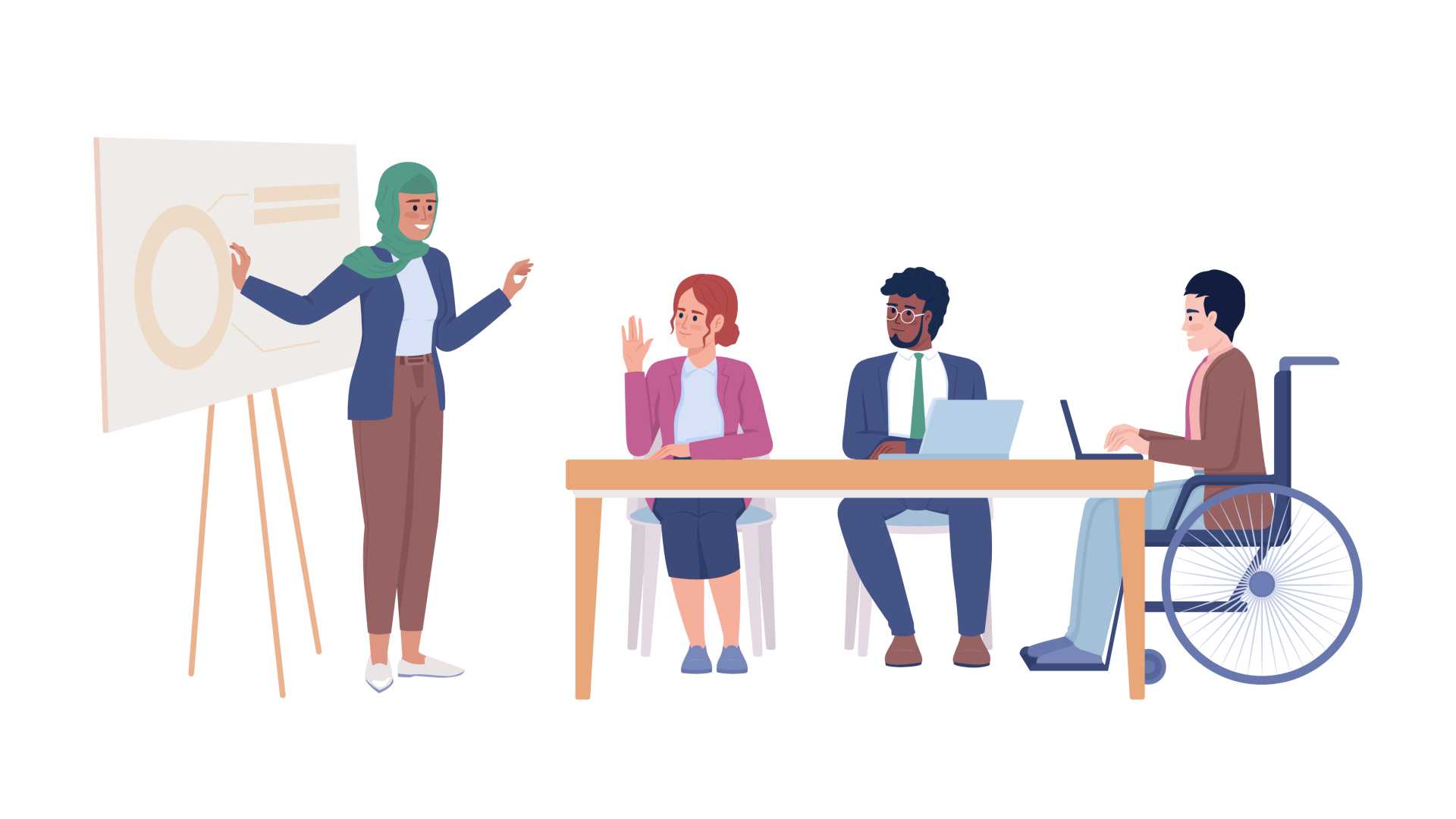Diversity, equity and inclusion is quite rightly a huge focus for c-suite leaders. Despite decades of research, interventions and initiatives, widespread discrimination and under-representation of minorities – in race, gender, neurodiversity and others – in the workplace continues.
Consider the Parker Review’s latest survey of the UK’s 350 largest businesses, which shows that we still have a long way to go to make our boardrooms more diverse. According to the report, just 12 chief executives in the FTSE 100 come from black or minority ethnic backgrounds – a significant rise from seven in 2022, but still a meagre return.
The pipeline into the C-suite is struggling too. Just one in eight senior managers are ethnically diverse, while new research from Youth Futures Foundation reveals that almost half of those from ethnic minority backgrounds under the age of 25 have met with discrimination in the workplace, with a third saying they have experienced racist remarks from colleagues. The UK is already lagging behind its OECD counterparts when it comes to youth employment – such unnecessary barriers will only make getting young people into work harder.
However, there is another angle to improving representation in our workforces. It’s a truism in business that the first step to solving a problem is to frame it, understand its scale and then deploy resources to solve it, measuring your results along the way.
We know that women and people from minority ethnic backgrounds are under-represented in senior leadership positions. That’s why we have worthwhile initiatives like the 30% Club or the Stanford Executive Education Black Leaders Programme to drive progress, no matter how slow it might be.
Work-limiting conditions
But what about those struggling to gain employment in groups that are harder to define? Take this comment from a Talent Intelligence Workshop TALiNT Partners ran last year: “Diversity, equity and inclusion spend can potentially get diverted to what’s easy to measure, not where it’s most needed.”
This leads us onto a new phenomenon affecting huge numbers of potential employees that has grown since the pandemic – people with work-limiting health conditions that restrict the type or amount of work they can do.
According to The Health Foundation, as many as 3.7 million people in the UK are struggling with a work-limiting condition, a figure that has risen by 1.4 million over the past decade and represents 12% of our working age population
The rise in work-limiting conditions is being driven by sharp increases in reported mental ill health, but cardiovascular and musculoskeletal conditions remain the most common form of a work-limiting health condition.
It’s not just about our older workforce – though much needs to be done to better represent them too – with the number of younger workers with work-limiting health conditions doubling in the last decade, and the number of working age people living with a major illness expected to rise by 500,000 by 2030.
It is also a global phenomenon. Untreated mental health conditions cost Australian workplaces $10.9bn each year, with almost half of that related to absenteeism, according to a PwC and Beyond Blue report. In the US, work absences from illness are at an all-time high, with long COVID and chronic illnesses taking hold.
Diversity, equity and inclusion spend can potentially get diverted to what’s easy to measure, not where it’s most needed
Growth is low
Sacha Romanovitch is Chair of the Commission for Healthier Working Lives, a new body set up by the Health Foundation to explore the impact of the decline in working-age health. She believes that improving access to work is vital to equality.
“In the UK there are over 17.5 million people in financially vulnerable circumstances. There is only so much people can do to reduce their costs and many do not have the option of increasing their income because of health issues,” she says.
“There’s a growth perspective, because our businesses need workers in order to grow. Then there’s the macroeconomic aspect. Our system requires people of working age to be working, in order to fund provision for older people who have reached the end of their working lives. With an ageing population and fewer people of working age working to their full potential, the economic model starts to fail,” she warns.
The onus should be on employers to recognise the challenges their employees are facing and support them through it, in order to improve productivity, innovation and engagement. ‘Discretionary effort’ – when an employee does things they don’t have to do, simply because they enjoy their work and have enough energy to put more into it – is where employers see creativity, better customer service and motivation.
“From an employer’s perspective, it’s like thinking about your workforce as if you were the leader of a high-performing sports team. How can you support people to have their best energy?” says Romanovitch.
How to respond?
The challenge for organisations is in identifying the people who sit in the work-limiting group. In a TALiNT Partners presentation last year, Tony Wilson, Director at the Institute of Employment Studies, highlighted how the phenomenon is so recent, that we haven’t figured out how best to respond to it.
People with work-limiting conditions may have registered disabilities, but they also may not. They are likely to have been out of full employment for some time, or they may be carers for other family members. The parameters are so wide, that measuring this group is extremely difficult. Consequently, diversity, equity and inclusion work on getting them back into full-time employment is not being done – to the detriment of our future productivity.
So should the focus of current DE&I programmes be changed to widen the parameters of who we involve? As with all complex problems, there are no simple answers.
It is vital that we continue to work on diversity of gender, ethnicity, thought and ability, but it is also vital that we recognise new cohorts of people who need help. The first step to solving a problem is recognising it, and the challenges of work-limiting conditions are real, growing – but solvable. Now is the time to make a change.
Declan Slattery, Chair of the Global Advisory Board and Head of Employer Programme at TALiNT Partners reflected, “This insightful piece resonates deeply with the conversations and experiences we’ve gathered from our interactions with the global TA leader community. Recognising the evolving landscape of diversity, equity, and inclusion (DE&I), it’s clear that our efforts to actively broaden our Talent Pool reach must expand to encompass the challenges faced by individuals with work-limiting conditions. This commentary underscores the importance of framing the issue, understanding its complexity, and adapting our strategies to ensure inclusivity across all dimensions of diversity. It’s a call to action for organisations to not only recognise the traditional underrepresented groups but also to extend support and opportunities to those facing work-limiting health conditions. By broadening the scope of our DE&I initiatives, we not only foster a more inclusive workplace culture but also unlock untapped potential, driving productivity, innovation, and overall organisational success.”











